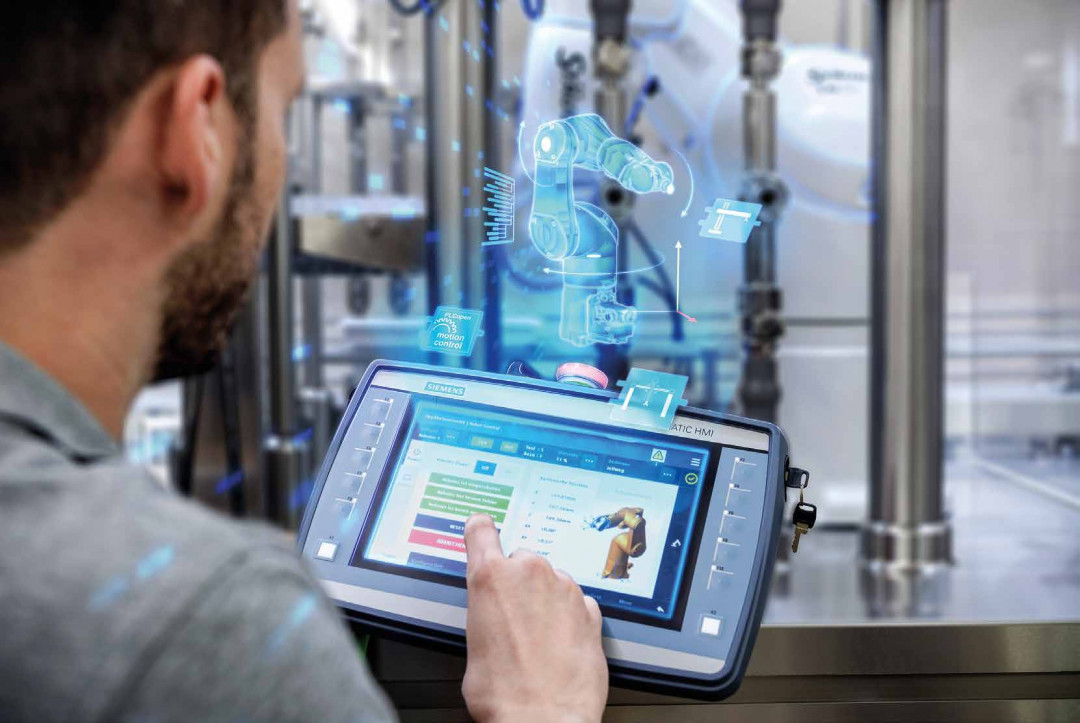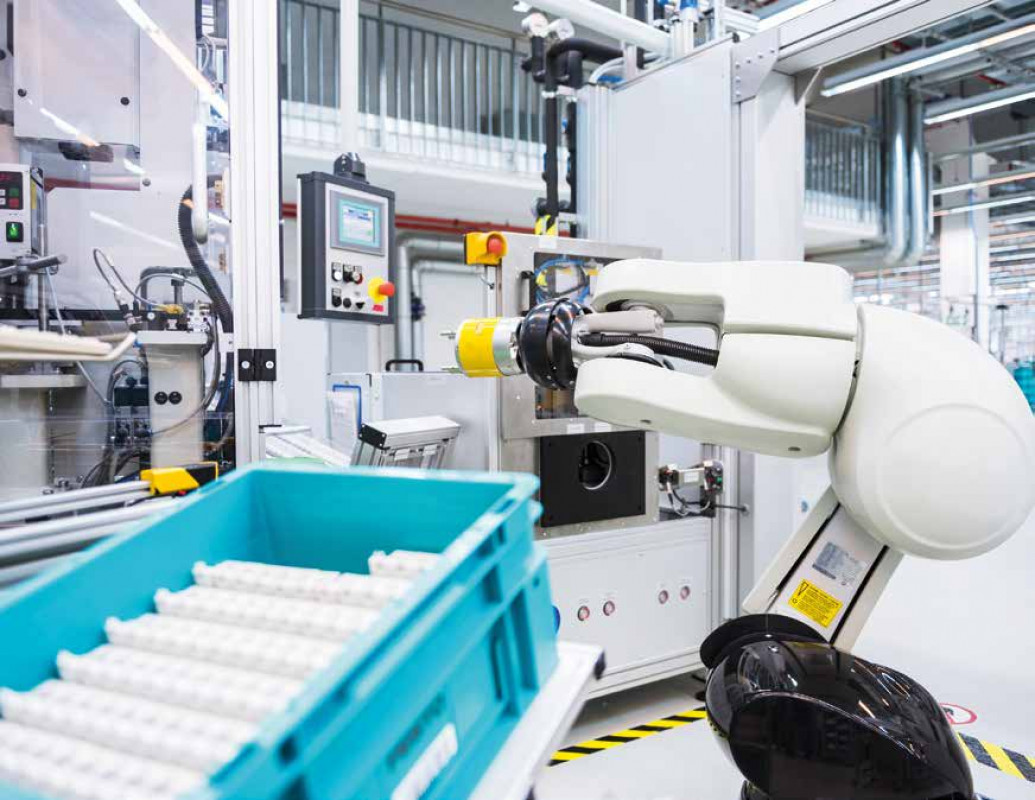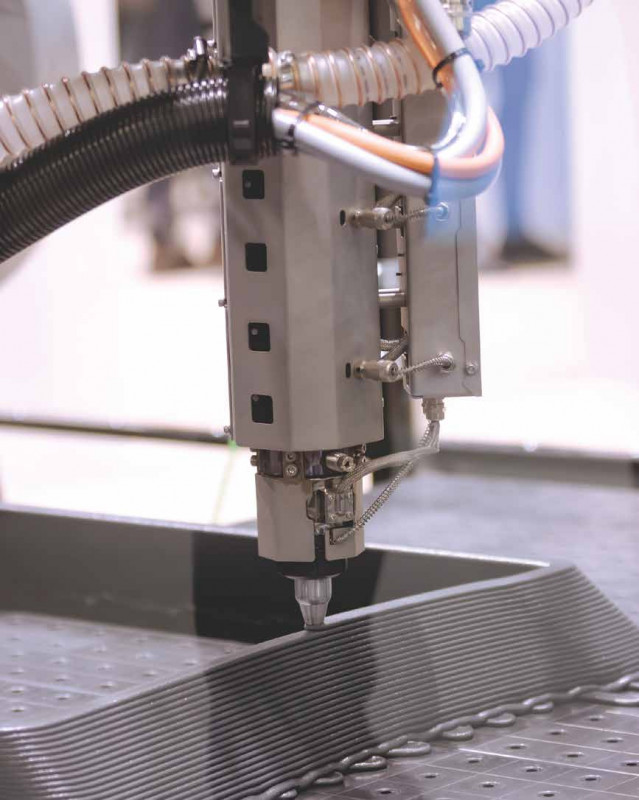

Additive manufacturing and the use of smaller robots offer SMEs good opportunities to digitalize their processes in small steps. In combination with smart financing solutions, this is even possible without investing your own capital.
BY KLAUS MEYER
Companies of all sizes can use the transformation to IoT technologies to tackle today's challenges. From labour shortages to difficulties with supply chains and the increased prices of raw materials and energy, digitalization offers a way to overcome uncertainty.
The good news for SMEs is that even with comparatively small investments in such future technologies, tangible effects can be achieved. Small and medium-sized companies in particular should consider starting the digital transformation, at least in small steps, for example with 3D printers or small robots.
Small robots to combat the shortage of skilled workers
One example of the integration of small but effective elements of robotics on the factory floor is the use of cobots - collaborative robots that work directly with human staff. These cobots perform repetitive tasks or activities that require a lot of strength. They are sometimes sensitive and mobile, meaning that safety fences are no longer necessary and they can be used flexibly alongside human personnel along the entire production line.
Small robots are also suitable for the quality inspection of workpieces. For example, they pick up the finished parts and scan the barcode. After the workpieces have been blown off and cleaned, the lightweight robot transports them to a tilting device in the measuring station. Any deviations are determined there. With the help of networked technology, each component can be precisely measured and identified so that any necessary corrections can be implemented immediately in the system. The system organizes itself autonomously, in line with the IoT. After the inspection, the robot places the part in a plastic crate to prepare it for delivery (Fig. 1).

Another new development is that their use in ever smaller production processes is paying off - automated and smart production is therefore no longer the preserve of large car manufacturers. Smaller companies should take advantage of the new robot trend, partly because the IT hurdles are no longer a deterrent. The intuitive software requires little training. In fact, almost half of German companies with 50 to 500 employees are planning to use robots. Another exciting trend in this area is the automation of older machines, as many production systems can be digitally upgraded at a later date. This means that the leap into the IoT age can be achieved with a manageable amount of effort.
Driver for sustainability
This also applies to additive manufacturing, which has even more advantages: 3D printing can be used quickly and very flexibly (Fig. 2). With this technology, companies can build prototypes and bring them to market more quickly. This is another advantage for smaller companies, as not only is the technology as a whole becoming increasingly affordable, it also generally leads to cost reductions in production. Another major advantage of additive manufacturing is the ability to combine the physical supply chain with a digital process chain.

Additive manufacturing is also becoming an important factor for the green industry: "Additive manufacturing is often cited as one of the technologies driving sustainability - it uses less raw material, produces components with greater integrity, fewer welds and less waste," as Karsten Heuser, Vice President Additive Manufacturing at Siemens Digital Industries, aptly describes it, while emphasizing that a comprehensive switch to additive processes would of course require investment: "It's about bridging the gap (. ...) at a time when manufacturing is under great pressure. There is no question in my mind that smart financing is an accelerator and will play a big role in enabling these investments - on a large scale and sustainably" (source: Whitepaper "Nachhaltig(keit) finanzieren": www.siemens.com/nachhaltig-finanzieren).
Maximizing the benefits of digitalization with smart financing
SMEs that want to invest in sustainable digital technologies should consider the potential of smart financing solutions - these are available for larger capital requirements, but also for smaller sums. A specialist financier who understands the sector and its challenges should be chosen.
Specialized financiers such as Siemens Financial Services represent a bank-independent alternative whose offers do not affect existing credit lines and are therefore balance sheet-neutral. Such providers have a deep technological understanding, which in turn results in flexible financing tailored to the respective customer. This is particularly useful in the case of "soft" digitalization and automation, where small and medium-sized investments are repeatedly made. Here, smart financing offers the advantage that it can be tailored to specific business and cash flow requirements.
For smaller sums, an unbureaucratic installment calculation is often possible in just a few seconds. Financing is available not only for 3D printers or robots, but also for everything that small and medium-sized companies need - from office equipment to factory buildings or even an e-mobility charging infrastructure for the company parking lot.
Focus on the benefits
Experienced financiers are constantly developing new financial services that adapt to the digital world. This means that pay-per-use models are possible where financing is based on the actual benefit (Fig. 3). Savings or profits from access to the respective technology can be used to finance the monthly payments - this can even mean that the technology is cost-neutral for the user from the outset. Finally, future savings can be used effectively to finance the current investment without the need to move own capital.

Digital sales financing at the point of sale
Both the purchasing departments of larger companies and small and medium-sized enterprises require convenient IT tools that allow them to calculate or adjust their payment plan online via the web or app at any time. This is an opportunity for manufacturers, OEMs and vendors to score points with digital sales financing that is offered together with the product and a financing partner. This is an important strategy to stand out from the competition and avoid payment defaults. Ideally, sales financing is supported by powerful and easy-to-use digital tools.
Start gently
It is therefore possible to start the transformation in small steps without risking your own capital. Companies that want to invest in new digital technologies and remain competitive should only choose a partner that can offer them intelligent and flexible financing solutions. Small steps into the digital future are also possible for SMEs at any time thanks to smart financing!
You can find the entire article in the GIESSEREI issue 03/2024.

